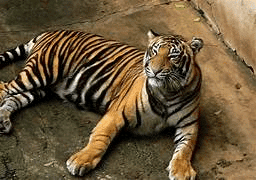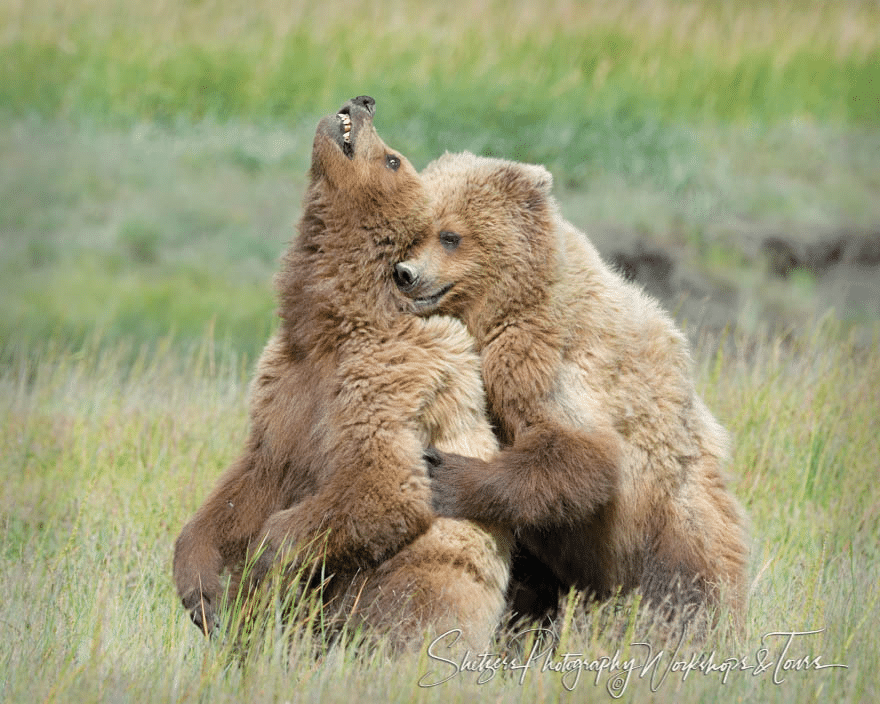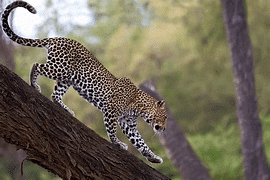Class 10 English Chapter 1 Question Answers - First Flight
Q1. “Humour is the perfect medicine for all diseases”. Discuss this statement by taking examples from the poem “How to Tell Wild Animals”.
Ans: The poet uses humour to describe wild animals in a funny way, making even dangerous creatures seem amusing. For example, he says if a roaring beast kills you, it’s likely an Asian Lion, or if a striped animal eats you, it’s a Bengal Tiger. Words like “bearhug” and the idea that hyenas laugh or crocodiles cry fake tears add to the fun. The poem’s light-hearted tone makes it enjoyable and shows how humour can make even scary things entertaining.
Q2. Name the different animals and birds found in the jungles of the east.
Ans: In the eastern jungles, animals like the Bengal Tiger, Leopard, Bear, Hyena, Crocodile, and Chameleon can be found. Each has unique traits—like the tiger’s stripes, the leopard’s spots, the hyena’s laugh, and the chameleon’s colour-changing ability.
 Bengal Tiger
Bengal Tiger
Q3. What is the famous saying associated with crocodiles and what does it mean?
Ans: The famous saying associated with crocodiles is ‘shedding crocodile tears’. This expression refers to tears or displays of sorrow that are insincere. The phrase originates from an old belief that crocodiles would weep while consuming their prey.
Q4. Peppered spots, tawny beast and noble wild beasts live in the jungles along with some others. Name them.
Ans: The leopard, lion, and Bengal Tiger inhabit the jungles alongside other creatures such as bears, hyenas, crocodiles, and chameleons.
Q5. What is the theme of the poem — ‘How to Tell Wild Animals’?
Ans: The theme of the poem is to create humour. The poet achieves this by suggesting dangerous methods for identifying wild animals. You can recognise most beasts while they are attacking you. Instead of calling for help or trying to defend yourself, you are focused on identifying the attacker, which makes the situation amusing.
Q6. How does the Bengal Tiger look? What is so distinct about a hint?
Ans: The Bengal Tiger is a noble wild animal that roams the forest. Its skin is a striking yellow adorned with black stripes. When the Bengal Tiger spots someone, it instinctively tries to attack them.
Q7. How does the poet describe the bear?
Ans: The poet describes the bear as a creature that can easily enter human spaces, which is why one might encounter a bear in their own yard. When the bear approaches a person, it may seem to embrace them affectionately. However, this seemingly loving gesture can actually be fatal. Bear
Bear
Q8. Why does the poet say that a bear’s ‘hug’ may confuse a novice?
Ans: The poet describes a bear's ‘hug’ as potentially confusing for a novice because bears can be dangerous. When a bear hugs its victim tightly, it can lead to death. A novice, unaware of this, might misinterpret the bear's embrace as a loving gesture, not realising the true danger behind it.
Q9. What does the poet say about the crocodile and the hyena?
Ans: The poet presents the crocodile and the hyena in a humorous light. The hyena appears to be laughing, but it is merely a trick of its expression; it does not actually laugh. In contrast, the crocodile seems to shed tears while consuming its prey, giving the impression of mourning. However, this is misleading, as the crocodile's tears do not signify genuine sorrow for its victim.
Q10. How can one recognise the leopard?
Ans: The leopard is a highly agile animal, always prepared to pounce on its prey. Its coat is covered with distinctive dark spots. If it spots you, it may leap towards you, showing no mercy. Remember, calling for help will not deter it, as it will continue to attack. LeopardQ11. Can a novice distinguish among wild animals? How can hyenas be distinguished from crocodiles?
LeopardQ11. Can a novice distinguish among wild animals? How can hyenas be distinguished from crocodiles?
Ans: It can be quite difficult for a novice to distinguish between wild animals, as they may easily become confused. However, distinguishing between crocodiles and hyenas is relatively straightforward. Hyenas are often recognised by their merry smiles, while crocodiles can be identified by their characteristic tears.
Q12. How will you recognise a chameleon?
Ans: A chameleon is a small creature that resembles a lizard. Notably, it lacks ears and does not have any wings. If you spot such a creature resting on a tree, you can be certain it is a chameleon.
Q13. What humorous descriptions do you find in the poem?
Ans: Humorous descriptions of animals appear throughout the poem. The poet uses clever word choices and unique explanations to create these images. For instance, the Bengal tiger is portrayed as noble, while the bear is said to give hugs and the hyena is depicted as smiling.
Q14. Does ‘dyin’ really rhyme with ‘lion’? Can you say it in such a way that it does?
Ans: No, ‘dyin’ does not rhyme with ‘lion’. The poet uses ‘dyin’ specifically so that when pronounced, it creates a rhyme with ‘lion’.
Q15: What do you learn about the leopard from this poem?
Ans: The poem tells us that a leopard has spots on his skin. As soon as he sees someone he leaps over him at once and starts eating. He is so terrifying and powerful.
|
61 videos|812 docs|69 tests
|
FAQs on Class 10 English Chapter 1 Question Answers - First Flight
| 1. How can we identify different wild animals in our surroundings? |  |
| 2. What are some common characteristics of mammals that help in their identification? |  |
| 3. Why is it important to know how to identify wild animals? |  |
| 4. What role do animal tracks play in identifying wild animals? |  |
| 5. Can we identify wild animals by their sounds, and if so, how? |  |

















